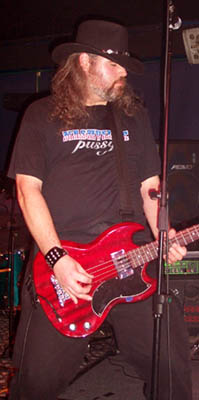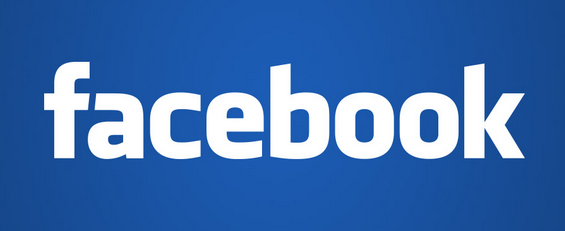Hugh Gilmour
E-mail interview, March 2007

BDWBN: How did you end up working with graphic design? What's your background? For how long have you been doing it?
Hugh:
I discovered heavy metal music around 1980-81 after seeing Motorhead on TV. I found I liked their LP cover artwork too and started copying it into my sketchbooks and stenciling the logos onto my school bag. Through Motorhead, I started looking for other heavy metal bands, and also discovered AC/DC, Black Sabbath and Iron Maiden, mainly by buying compilations like Axe Attack and listening to Tommy Vance's BBC Radio 1 Friday Rock Show. Music fans today are spoilt to the point of having TOO MUCH choice. The whole sense of discovery is completely circumvented by the availability of iTunes and the ease with which one can obtain a group's entire back catalogue AND WITHOUT ANY ARTWORK! It's something I feel quite strongly about.
Iron Maiden were the first band I had to own EVERYTHING by, including all of the different coloured vinyls and imports. In 1981 or 1982 that wasn't really a huge amount though. I had always been good at art, and I guess heavy metal LP sleeves (especially those early Maiden sleeves by Derek Riggs) sort of gave me a voice, so to speak, to express myself artistically. I decided then that I had to design record covers when I grew up, and thinking that no one else would allow me, I bought a guitar, invented my own band (Death Toll), and started writing songs and designing posters and covers for this invented band. I would have been about 12 years old at the time. I actually took up guitar because I wanted to design sleeves. I recently found a sketchbook from around this time (c.1982), in which I had compiled "The Best Of Iron Maiden" from their first 3 records, complete with logo, a "bloody" style title, publishing credit dates and a catalogue number. Maybe not normal behaviour for an aspiring 12 year old graphic artist, as I didn't fully understand what it all meant, but I must have known it was important to have all of this information included.
By my late teens, designing cover artwork for a living didn't seem totally realistic, partly because album cover art in the 1980s moved away from purely painting to alternative mediums such as photography and computer technology, so I decided to become an illustrator via being a more traditional artist. I did an art foundation course after leaving home, followed by a diploma course in Technical Illustration. I gave that a go for a couple of years, but returned back to my studies by doing Illustration combined with Graphic Design at Kingston University. I knew the future of graphic design lay with computers, so decided I needed to learn how to use an Apple Mac. I applied for a job at Castle Communications PLC, mainly as a summer job as they needed a "Mac Operator". I could turn one on and then off again! They offered me a permanent job, so I quit the degree course, and have not looked back. That was in 1993. Castle Communications PLC at that time had a poor reputation for producing budget releases, and I hope I did my bit to change that perception. They had a great catalogue which included Black Sabbath, Motorhead and Uriah Heep. They would later sign Marillion, WASP, Thunder, Adrian Smith and of course Bruce.
BDWBN: Is working with Bruce any different from other artists?
Hugh: Every artist is different, but Bruce does fully acknowledge how integral the artwork and packaging is to a release, which is the case for many hard rock bands. Credit needs to be given to Bruce's management team who have an important role in the whole creative process too. Bruce is very enthusiastic, which is important for me when looking for feedback or direction from a client.
BDWBN: Does Bruce gives you instruction on what to use, what style, or are you given free hand on how to present the record?
Hugh: There's no hard or fast rules, as he's always been happy to consider any ideas or concepts I come up with, but usually they'll be a unifying theme or concept to the final recording (such as 'The Chemical Wedding') where it's imperative the cover and booklet complement the music. Also, Bruce is a big fan of artists such as William Blake, both as an artist and writer, so Blake has appeared on a couple of releases.
BDWBN: Where do you find inspiration?
Hugh: Prior to starting on 'Accident Of Birth', I thought it might be cool to use Derek Riggs for the cover design, but I thought they'd never go for it, but then they suggested Derek before I could, so that was quite serendipitous. The whole cover concept was discussed over a couple of pints in Latymers pub in Hammersmith.
Likewise, I remember seeing 'Ghost Of A Flea' by William Blake in The Tate Gallery when I was a teenager, and I thought it would make a fantastic album cover, as it was such a bizarre and quite ahead of its time image. When Bruce phoned me up to discuss 'The Chemical Wedding', I almost knew he was going to suggest using that particular piece of art when he mentioned liking Blake.
BDWBN: Give an example on something you think turned out good. And why?
Hugh: I am really pleased with the whole reissue campaign of expanded albums we did a year or two back. It was great to provide a bit of continuity between the releases. I didn't work on Bruce's first two LPs (I was still at college), but it was great to give them a bit of unity with the later releases, such as 'Skunkworks' etc. I worked with Bruce prior to working with Maiden, but it has been very important for me to have been involved with them. Some of the work I've done for Bruce had very limited exposure, such as the tour shirts I've designed. When they found that the 'Alive In Studio A' cover did not translate to a t-shirt, they asked me to work with Bruce on coming up with two different designs. One was a sort of Klu Klux Klansman with a camera lens for a face with a guitar coming out of his stomach. That was done using a paintbrush and airbrush with my friend Dylan modeling for the figure. The other design was a "Sacred Cowboy" for which we had John Wayne as the Pope, which you can see Bruce wearing in the artwork for the 'Scream For Me Brazil' booklet. I also did some designs for a European tour in 2002 which was based on a World War Two RAF poster of four airmen. I think that looks cool. One particularly rare release that I liked was the 'Killing Floor' single, which was released in Japan. I also thought the DVD 'Anthology' was a nice package too.
BDWBN: Give an example on something you think turned out not so good and how come?
Hugh: I'm pleased with most of the work I've done for Bruce, but the record label didn't like the original 'Alive In Studio A' cover. They said it looked like a bootleg, not realizing that it was not meant to be "The New Bruce Dickinson Album", merely a bit of a stopgap record. I think the vinyl version looks really cool though, if I say so myself. Vinyl always does. The titles were actually thin sheets of lead fed through a very old type writer then scanned into the computer. Now you'd probably do it all in Photoshop, but it wouldn't have had the same effect.
BDWBN: You are yourself a musician. Choose: Doing design or playing the bass?
Hugh: I play bass in a band called Pig Iron who were privileged enough to have supported Maiden at Hammersmith in 2005; a very special event to raise money for Clive Burr. The first ever gig I attended was Maiden way back in 1983 at the same venue on the World Piece Tour, so it was obviously very special for me. Playing guitar, pretending to be a rock star, or sitting behind an Apple Mac, as I am doing now, are totally different, almost opposing disciplines. I'd like to carry on with both, but I don't intend to give up designing. And as I said before, I took up the guitar to get into designing record covers. You can hear Pig Iron on www.myspace.com/soundsofcaligula or www.pigironm.com. My artwork can be seen on www.gilmourdesign.co.uk or www.myspace.com/hughgilmour. If Pig Iron get a big hit record maybe I can retire from both.
BDWBN: The Bruce Dickinson Well-being Network really likes trivia. Any interesting anecdote regarding your work with Bruce that you think would interest the visitors to this site?
Hugh: I have been in many privileged situations through working with Bruce. I have flown with Bruce piloting the plane; the first time in his tiny, six-seater plane to an interview in Amsterdam, the last time in a 200-seater airbus going to a gig in Stockholm. Also, when Bruce and Janick came to see Pig Iron (supporting Budgie in 2002), Bruce asked us to play a session on his radio show, including a cover which he'd sing on (we did Deep Purple's 'Space Truckin''). That was an amazing experience, and the first time Pig Iron were professionally recorded. I vividly remember closing my eyes and thinking "Bruce Dickinson is singing in my band!" The man is a legend.
Lastly, does anyone have a Japanese copy of the 'Wrathchild' bw 'Ghengis Khan' seven inch single? I'll happily trade it for my spare copy of the Jap 'Prowler' 7".
Thanks to Hugh for finding time to answer these questions for us.

